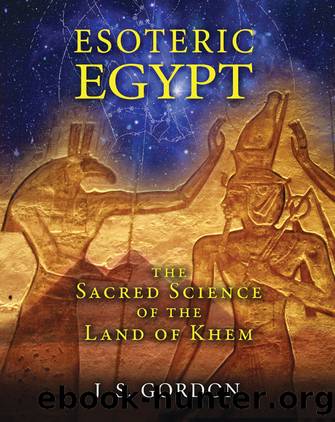Esoteric Egypt by J. S. Gordon

Author:J. S. Gordon
Language: eng
Format: epub
Tags: Spirituality/Ancient Mysteries
Publisher: Inner Traditions/Bear & Company
Published: 2015-01-15T00:00:00+00:00
But What Happened in Egypt Itself between 100,000 and 5,000 Years Ago?
The history of Egypt during this prolonged period must itself remain largely (if not entirely) within the field of speculation and conjecture, even though we have the outline record of the divine and semidivine dynasties of Manetho to fall back on as a general guide. In that respect, the one thing we can depend upon is the importance that the ancient Egyptian religion placed upon integrity and accuracy (from the outset) in every single aspect of their cultural existence. Hence, we can surely otherwise rely without undue anxiety upon their records of the contact they maintained with the âland of Pun(t)ââthe âland of the godsââfrom which they imported spices. Although some Egyptologists have concluded that Pun(t) must relate to Ethiopia, there are no records of spices having ever been grown (in sufficient abundance for commerce) in that part of Africa, whereas northwestern India was famous for them. Pun(t) appears almost certainly to be synonymous with the lush valley and delta of the river Indus leading up through the delta province of Sind into the Punjab and thence to Kashmir. The latter lies in the foothills of the western Himalayas and the Hindu Kush range where Apollonius of Tyana apparently went to study with the fraternity of spiritual adepts or rishisâwho were said to live there even up to the beginning of the twentieth century. Ethiopia has no such tradition. But why should the early Egyptians have felt the contact with Pun(t) to be of such importance?
In answer, human nature being as it is where tradition is concerned, we can perhaps rely quite strongly upon a probably instinctive wish by the emigrant Atlanto-Caucasians to reignite and subsequently maintain the link with the land of their original spiritual and genetic origin. By so doing, they would have been able to infuse in themselves a constant sense of proximity and contact, which could provide considerable support to their new civilization, founded as it was on entirely spiritual and metaphysical principles. But perhaps even behind this there are further intelligently constructive purposes at work.
Spiritual Geography and Reconstructed Ethnic Links
If one considers a map (see fig. 8.1) of the area extending between Egypt and the high plateau of Tibet, it is interesting to note that the angle of orientation is roughly similar to that of the plane of the ecliptic relative to the celestial equator. While this might seem to be pure coincidence, there is no denying the fact that this same corridor incorporates the whole cradle of modern civilization around three major rivers, each with deltasâthat is, the Nile, the Tigris-Euphrates, and the Indus. At the top of this same corridor lies the Gobi Desert and the high plateau of Tibet, where the godsâaccording to Indo-Tibetan traditionâwere supposed to live, in the fabled Shamballa.*204 Next down lie the valleys of the Hindu Kush, adjoining Kashmir and Pun(t)jab, where the adept demigods, or rishis, traditionally lived; then next in line comes greater Mesopotamia (incorporating
Download
This site does not store any files on its server. We only index and link to content provided by other sites. Please contact the content providers to delete copyright contents if any and email us, we'll remove relevant links or contents immediately.
Becoming Supernatural by Dr. Joe Dispenza(7107)
Tools of Titans by Timothy Ferriss(6950)
The Witchcraft of Salem Village by Shirley Jackson(6584)
Inner Engineering: A Yogi's Guide to Joy by Sadhguru(5897)
The Four Agreements by Don Miguel Ruiz(5511)
The Power of Now: A Guide to Spiritual Enlightenment by Eckhart Tolle(4756)
The Wisdom of Sundays by Oprah Winfrey(4627)
Room 212 by Kate Stewart(4107)
Fear by Osho(4085)
Pale Blue Dot by Carl Sagan(4001)
The David Icke Guide to the Global Conspiracy (and how to end it) by David Icke(3883)
Rising Strong by Brene Brown(3783)
Animal Frequency by Melissa Alvarez(3755)
How to Change Your Mind by Michael Pollan(3679)
Sigil Witchery by Laura Tempest Zakroff(3652)
Real Magic by Dean Radin PhD(3569)
Secrets of Antigravity Propulsion: Tesla, UFOs, and Classified Aerospace Technology by Ph.D. Paul A. Laviolette(3450)
The Art of Happiness by The Dalai Lama(3385)
Man and His Symbols by Carl Gustav Jung(3315)
